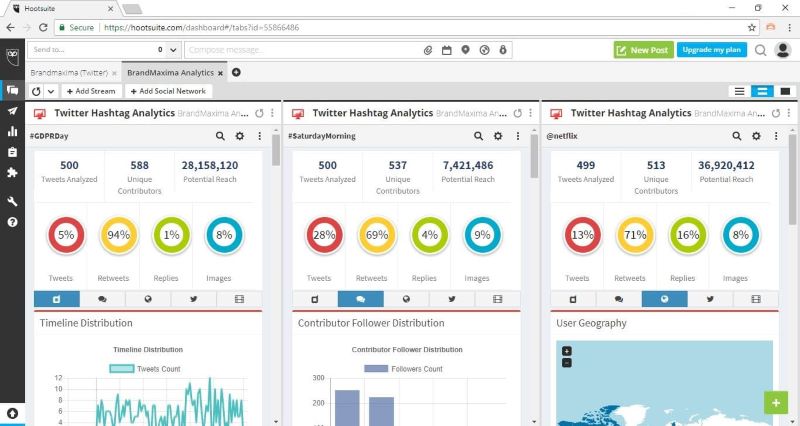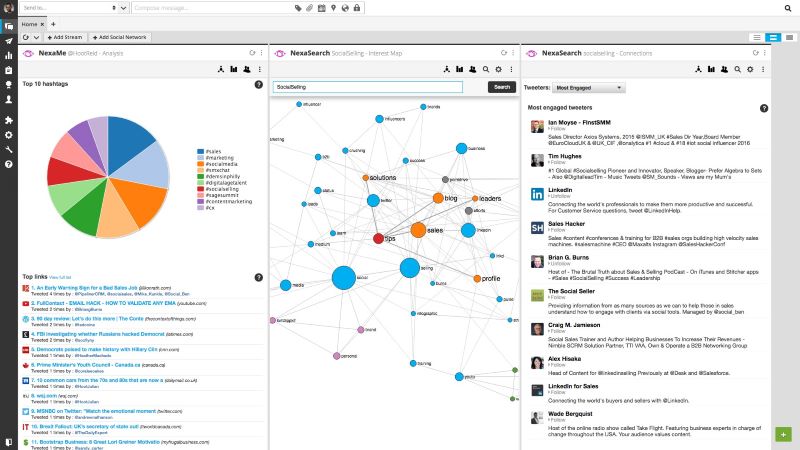Social Listening continues to emphasize how crucial it is to corporate operations. To get the best results from listening to and monitoring social networks, you must identify and keep track of the appropriate Social Listening keywords. What exactly are Social Listening keywords, and which ones should you be monitoring? The stages to creating a successful Social Listening strategy will also be shared with you in this post.
The process of Social Listening allows you to analyze the conversations and trends happening not only around your Brand but around your entire industry and use those insights to make marketing decisions better.
As a result, you’ll know why, where, and how these conversations are taking place as well as what people are saying about your business. This aids in the development of future campaigns, the development of an effective influencer program, the improvement of your content and message strategy, and even the building of more powerful Brand relationships.
Keywords are words (or word combinations) that you feed into your monitoring tool while monitoring social media so it can locate all documents on your website that contain these words social networks and the web. A tweet, a post on Facebook or Google+, the title of a YouTube video, a forum comment, a sentence in an online article, or a question and answer site are all examples of documents.

What are Social Listening keywords?
There are three basic categories of keywords you should include in your social media tracking program, even if you can track any phrase:
You should be aware of every mention of your Brand online. Whether it’s a positive mention (praise or suggestion), complaint, question or anything else, you should evaluate it promptly and react as appropriate. Remember that everything on the Internet moves very quickly, especially if it’s a social media crisis.
Additionally, by tracking your Brand, you discover Brand influencers and can observe your Brand’s position online – no matter how well-known the Brand or less and what the buzz around your Brand depends on (season, campaign, holiday period, etc.).
Whether you’re running a #Hashtag Twitter campaign or showing an ad on national TV, you should see the reaction to it on the Internet. As we all know, even the most powerful advertising agencies and big Brands sometimes miss the signs of failed campaigns, leading to serious losses.
To track a campaign, simply enter its name, tagline, and/or hashtags as keywords.
You should follow people who are involved or within your company, as any negativity associated with their name could affect your company’s reputation.
Depending on what you’re selling, you can track keywords in your industry. This is a great way to find social selling opportunities, influencers in your industry, and Branding opportunities.
There are recurrent hashtags in several industries that a linked Brand can employ. For example, #weddingphotographer, #familyphotographer, and #photojournalism are hashtags for photographers; #seo and #seoproblems are hashtags for SEO specialists; and #gymlife is a hashtag for gyms. Find hashtags relevant to your sector with the use of a social media monitoring tool. Simply publish your goods, such as wedding images you’ve shot, along with the hashtag #weddingphotographer and your contact information to promote your Brand.

Types of keywords to monitor
To start building your Social Listening strategy, you can follow the steps below to streamline your process.
An effective Social Listening strategy starts with clear goals and specific KPIs.
Examples of goals:
Examples of KPIs include:

Set KPIs
There are a number of Social Listening tools available, and it’s important to choose one that fits your business goals. What features do you need? What is your budget to invest in Social Listening software? How easy is it to set up each social media monitoring tool?
Refer to the table above as a model for researching and choosing a Social Listening tool. Signing up for a free trial can be a great way to experience each tool before committing to one.
Compile specific insights from existing audience and customer data for Social Listening. What questions do customers ask most often? What do customers love most about your Brand and products? What issues do they care about most, and how do they express their opinions?
A list of relevant keywords and phrases will ensure you gather the most meaningful insights. Create lists from the categories below and apply them to your Social Listening software.
Remember that relevant conversations about your Brand and products can happen anywhere on the internet. You should monitor as many social channels as possible, starting with the channels your current audience and customers use the most and adding others to your strategy over time.
To narrow down and organize the information you need your Social Listening tool to collect, choose filters based on keyword lists, sentiment, interaction type (share, like, or comment), and more.
Schedule time in your workflow to measure the results of your Social Listening strategy. Using your KPIs as a guide, check the sentiment around your Brand, trending topics, number of mentions, etc. Then, determine the actions you will take, based on the results, and continuously refine your strategy.

Social Listening Strategy
Social Listening is a powerful tool you can leverage to improve your marketing. You should also consider researching and finding the right Social Listening keywords because this will directly affect the effectiveness of the Social Listening and monitoring process.
>>>> Xem thêm: Tìm hiểu về Social listening và các công cụ Social listening hiệu quả

